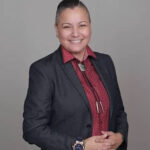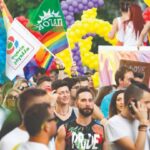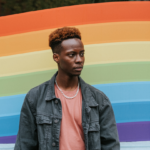Share
In American Indian tribes, there has long been a term to describe the highly respected and revered individuals known as “two-spirit.” Those who are two-spirit are described as having two souls in one body and as nonconforming to gender classifications of male or female. According to the Legacy Project, two-spirit people “. . . share a mixed-gender consciousness that is said to result from being born with both a male and female soul—hence, a people with two spirits inhabiting one body through a continuum of gender identity variations and attractions” (Salvo, n.d.).
The term “two-spirit” was adopted by native tribes to move away from the once derogatorily used term “berdache,” which was used by settlers to label pan-natives. Originally taken from the Arabic word bardaj, meaning “kept boy” or “slave,” it then evolved to the Spanish bardaxa or bardaje, meaning “person engaging in sodomy” (de Vries, 2021). Adapted from the Spanish, the final form “berdache” came from the French word bardache, translating as “catamite” or “boy kept by a pederast” (de Vries, 2021). “Berdache” was used by European settlers with a condemning nature rooted mostly in deeply set religious beliefs and categorically placed gender roles in which only male and female genders existed (de Vries, 2021). This condemnation often resulted in targeted violence and mayhem towards highly regarded two-spirit tribal members. This violence was once famously depicted in an etching by Theodor de Bry, the original German title translated to “Valboa throws some Indians, who had committed the terrible sin of sodomy, to the dogs to be torn apart” (de Bry, 1594), and reveals a horrific scene in which Spanish settlers have released their dogs to viciously attack two-spirit people. In the foreground you can see American Indians helplessly slaughtered, while in the background the settlers stand by in almost wicked ease. Artwork such as this speaks to the way in which settlers viewed the two-spirit people they encountered and failed to understand. Such deep-rooted belief systems led to a resounding need to punish those they believed lived outside of acceptable practices.
With the conquest of the American Indian people:
The efforts of missionaries, government agents, boarding schools, and white settlers resulted in the loss of many traditions in Native communities. . . . Two-spirit roles, in particular, were singled out for condemnation, interference, and many times violence. As a result, two-spirit traditions and practices went underground or disappeared in many tribes (IHS, n.d.).
In her article titled “Native American Two-Spirit: Living as Both Male and Female,” Patti Wigington writes that as “. . . indigenous groups have have maintained their traditions orally; there was no written history among the tribes” and therefore “. . . there was a fair amount of documentation among European invaders, many of whom kept journals of their travels” (2021). When looking at the historical accounts of two-spirit people, it must also be understood that most physical documentation was directly from early Spanish and European settlers, leading to a heavily skewed and biased depiction of the natives based on their own beliefs and homophobia (Williams, n.d.).
However, long before the incoming assaults of settlers, two-spirit people were treated with overwhelming respect within their tribes and seen as the result of supernatural intervention and that this was a manifestation of the sacred. The two-spirit people’s ability to embody both male and female souls was viewed as an honor, therefore resulting in these individuals becoming essential spiritual leaders amongst their tribes and fulfilling honored spiritual roles such as shamans, healers, and ceremonial leaders (IHS, n.d.), with other roles including artisans, mentors, teachers, potters, and mediators. A stated by Estrada (2011), not all tribes/nations have rigid gender roles, but among those that do, some consider there to be at least four genders: feminine woman, masculine woman, feminine man, masculine man. Two-spirit people are often distinguished from traditional genders by their dress, lifestyle, social roles, and temperament (IHS, n.d.). Additionally, they often formed both short- and long-term sexual and emotional relationships with non-two-spirit members of their own sex, and “Among the Lakota, Mohave, Crow, Cheyenne, and others, two-spirit people were believed to be lucky in love, and able to bestow this luck on others” (IHS, n.d.). As Randall (n.d.) wrote, male-bodied two-spirit individuals often took care of the home, wove, and created textiles while typically dressed in feminine clothing, whereas female-bodied two-spirit individuals would wear male clothing and fulfill roles such as horseback riders, warriors, healers, and hunters. Amongst the American Indian nations there was no discrimination regarding gender and sexuality, as people were valued for their character and their contributions to the tribe.
According to an article titled “The ‘Two-Spirit’ People of Indigenous North Americans” by Anthropology Professor Walter Williams, “Because their gender roles involved a mixture of both masculine and feminine traits, two-spirit people could do the work of both men and women. They were often considered to be hard workers and artistically gifted, of great value to their extended families and community” (n.d.). Williams also notes that:
Among some groups, such as the Navajo, a family was believed to be economically benefited by having a nadleh (literally translated as “one who is transformed”) androgynous person as a relative. Two-spirit persons assisted their siblings’ children and took care of elderly relatives, and often served as adoptive parents for homeless children (n.d.).
Professor Williams also mentioned the following:
In the twentieth-century, as homophobic European Christian influences increased among many American Indians, respect for same-sex love and for androgynous persons greatly declined. Two-spirit people were often forced, either by government officials, Christian missionaries, or their own community, to conform to standard gender roles. Some, who could not conform, either went underground or committed suicide. With the imposition of Euro-American marriage laws, same-sex marriages between two-spirit people and their spouses were no longer legally recognized. But with the revitalization of American Indian “red power” cultural pride since the 1960s and the rise of gay and lesbian liberation movements at the same time, a new respect for androgyny started slowly reemerging among American Indian people (n.d.).
The actual name “two-spirit” was adopted in 1990 “. . . when thirteen men, women, and transgender people from various tribes met in Winnipeg, Canada, with the task of finding a term that could unite the LGBTQ Native community,” according to an article by Chippewa Cree member Zachary Pullin in Native Peoples magazine (2014). The main purpose for doing so was to replace the non-native name of berdache and its negative connotation, and adopt a term created by the American Indian community, which would resonate, unilaterally, across native cultures. In an interview with two-spirit native Kiley May, she stated:
They came up with this present-day English term to describe our experience of being indigenous and LGBTQIA+. It comes from the Anishinaabemowin word niizh manidoowag. It describes somebody who has two spirits; to carry both masculine and feminine spirits. I think that speaks to being two-spirit today and our gender experiences here and now (Hensley, 2018).
Today’s culture of two-spirited individuals is reviving the many facets of being two-spirit by embracing new and traditional roles, educating natives and non-natives in the ways of two-spirit people, and encouraging advocacy across North America.
Wigington writes:
Modern two spirits publicly embrace the mixture of masculine and feminine within them, and there are two spirit societies all over North America. Gatherings, including powwows which are open to the public, are held regularly as a way of not only building community, but also of educating non-natives about the world of the two spirit. Today’s two-spirits are taking on the ceremonial roles of those who came before them, working to facilitate spiritual events in their communities. They also work as activists and healers and have been instrumental in bringing GLBT health issues to the forefront among the hundreds of native tribes. By bridging the gap between gender roles and indigenous spirituality, today’s two-spirits are continuing the sacred work of their ancestors (2021).
Out of the growing two-spirit community has come an incredible movement and an increase in two-spirit societies. These organizations have become a vital cornerstone of the two-spirit people and have evolved to meet the needs of American Indian and LGBTQ people.
Pullin writes:
On any given reservation today, there can be different levels of acceptance and understanding, and not all Native communities regard two spirit equally. There are complicated debates about the rights of LGBTQ American Indian men and women on reservations, like the one taking place on the Navajo Nation, where LGBT rights advocates have received support from some and resistance from others in their attempt to undo the Diné Marriage Act of 2005, which defines marriage as being only between a man and a woman (2014).
It is largely due, in part, to the efforts of the movements and communal advocacy that American Indian, both LGBTQIA+ and straight, are returning to a traditional honor and acceptance that was once prevalent amongst early indigenous tribes and their profound reverence for two-spirit people. Furthermore, Pullin states that:
In many cases, the clearest indications of acceptance have come from tribes themselves. At least seven native governments in the United States have passed laws recognizing same-sex marriage since 2008, and when the tribes took action, most did so in states where same-sex marriage was not yet legal, like the Suquamish near Seattle (2014).
The beauty and reverence for two-spirit people and traditions has truly begun to resurface during the past two decades, especially in more recent years with LGBTQIA+ and American Indian movements crossing paths. Those within LGBTQIA+ and American Indian communities both strongly advocate for the acceptance of people’s basic human right to live as they truly are without fear and condemnation, and for the right to express their heritage, history, and culture with pride and the understanding that inclusivity can only strengthen our society. It has become pivotal that today’s society evolves in understanding and only through the steadfast education and advocacy of these movements have we truly begun to see the change that has long been deserved. We have come a long way from the invasive persecution brought about by European and Spanish settlers, but there is still much work to be done to move into total inclusion, free of bias and deep-rooted belief systems. American Indian nations and LGBTQ IA+ communities alike are on the forefront of this movement and continue to bring about unprecedented change across America and the world.
References
- de Bry, T. (1594). Valboa wirfft etliche Indianer / welche die schreckliche Sund der Sodomey begangen / den Hunden fur sie zuzerreissen [Copper engraving]. University of Houston Libraries Special Collection; Rare Books and Maps Collection, Houston, TX. Retrieved from https://digitalcollections.lib.uh.edu/concern/images/rf55z877z?locale=en#?c=0&m=0&s=0&cv=0&xywh=-1120%2C-143%2C5073%2C2432
- de Vries, K. M. (2021). Berdache. Retrieved from https://www.britannica.com/topic/berdache
- Estrada, C G. S. (2011). Two spirits, nádleeh, and LGBTQ2 Navajo gaze. American Indian Culture and Research Journal, 35(4), 167–90.
- Hensley, L. (2018). What does it mean to identify as two-spirit? Fashion. Retrieved from https://fashionmagazine.com/flare/two-spirit/
- Indian Health Services (IHS). Two-spirit. Retrieved from https://www.ihs.gov/lgbt/health/twospirit/#:%7E:text= Two%20spirit%20identity%20was%20widely,Same% 2Dsex%20relations.
- Pullin, Z. (2014). Two-spirit: The story of a movement unfolds Native Peoples. Retrieved from https://www.kosmosjournal.org/news/two-spirit-the-story-of-a-movement-unfolds/
- Randall, C. (n.d.). Names and roles of two-spirit people: An historical perspective. Retrieved from http://www.johnmolloygallery.com/names-and-roles-of-two-spirit-people-an-historical-perspective.html
- Salvo, V. (n.d.). Two-spirit people. Retrieved from https://legacyprojectchicago.org/milestone/two-spirit-people
- Wigington, P. (2021). Native American two-spirit. Retrieved from https://www.thoughtco.com/native-american-two-spirit-4585024
- Williams, W. L. (n.d.). The ‘two-spirit’ people of indigenous North Americans. Retrieved from https://www.firstpeople.us/articles/the-two-spirit-people-of-indigenous-north-america

Kristina Padilla, MA, LAADC, ICAADC, CGS
Kristina Padilla, MA, LAADC, ICAADC, CGS, is a leader with the California Consortium of Addiction Programs and Professionals (CCAPP), where she serves as the vice president of strategic development and vice president of education, overseeing CCAPP’s education department. Mx. Padilla has a BS in criminal justice administration and a MA in counseling psychology with an emphasis on marriage and family therapy. She is on the board of directors of the National Association of Lesbian, Gay, Bisexual, Transgender Addiction Professionals and their Allies (NALGAP), where she is the vice president and the California representative. Mx. Padilla identifies as a trans, gender-fluid, two-spirit, nonbinary, biologically born woman. Her pronouns are she/her and they/them, and she goes by the suffix of Mx. Padilla.













 Counselor Magazine is the official publication of the California Association of Addiction Programs and Professionals (CCAPP). Counselor offers online continuing education, article archives, subscription deals, and article submission guidelines. It has been serving the addiction field for more than thirty years.
Counselor Magazine is the official publication of the California Association of Addiction Programs and Professionals (CCAPP). Counselor offers online continuing education, article archives, subscription deals, and article submission guidelines. It has been serving the addiction field for more than thirty years.